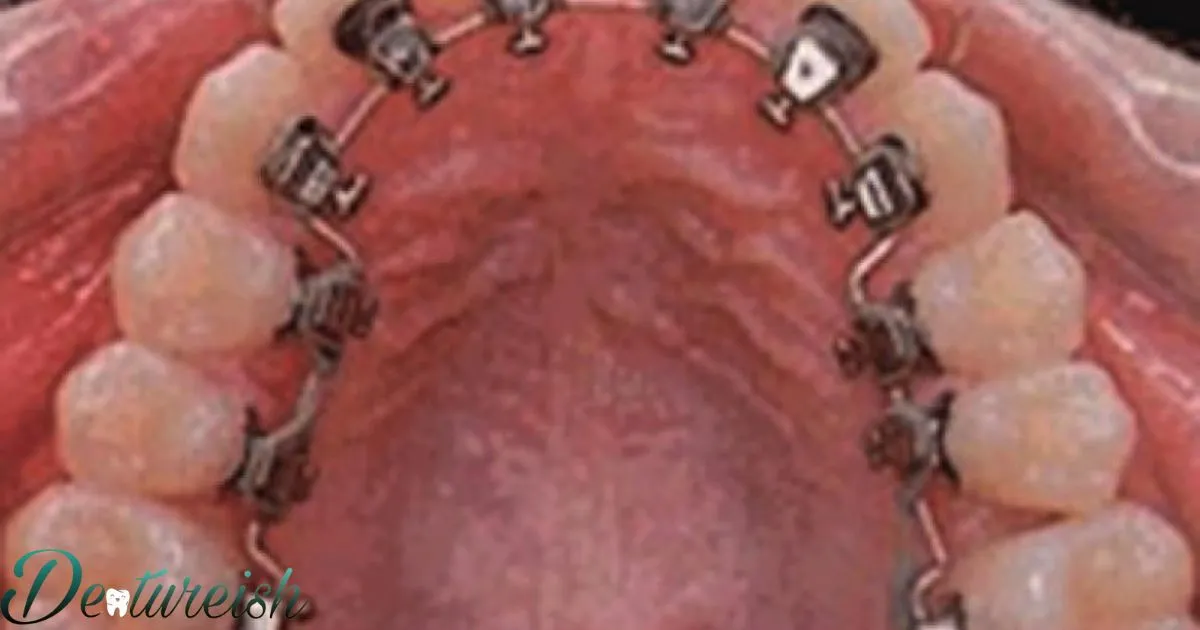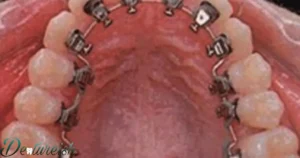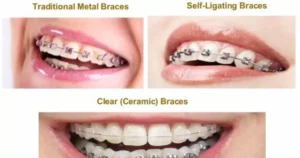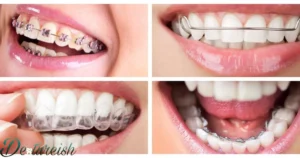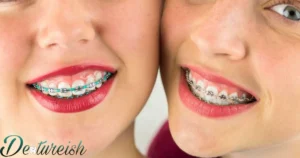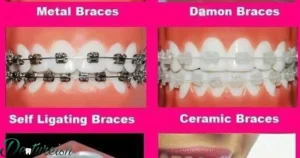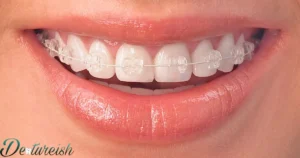Lingual braces are braces that are placed behind the teeth rather than in front. They are a type of invisible orthodontic treatment used to straighten teeth. Lingual braces are bonded to the back of each tooth. Although dental costs vary, lingual braces can cost twice as much as traditional metal braces. Fittings and adjustments can also take longer, which can add to the price tag.
Are lingual braces more expensive? Lingual braces tend to be pricier than traditional braces due to their customization and specialized application. However, they offer a discreet alternative for those seeking orthodontic treatment without the visibility of traditional braces.
Lingual braces generally require more time in treatment than traditional braces. Extra time means additional costs for routine adjustments and appointments. Lingual braces also tend to be more difficult for orthodontists to apply and adjust. The additional expertise and precision required contributes to their higher price tag compared to ordinary metal braces in front. For many, the benefits of lingual braces outweigh the greater expense.
How Do Lingual Braces Differ From Regular Braces?
Lingual braces are very different than regular metal braces. Regular braces are bonded to the front of the teeth where they are visible. Lingual braces are placed on the back side of the teeth. They are invisible when a person smiles or talks. Only the patient knows they are wearing braces.
The main difference is the location of the braces. Lingual braces are positioned lingually, which means on the tongue side of the teeth. Regular braces are placed buccally, on the cheek side of the teeth where everyone can see them. This makes lingual braces much harder to notice.
What Are Lingual Braces?
Lingual braces are a type of clear orthodontic treatment used to align teeth. They are sometimes called invisible braces because they are placed behind the teeth instead of in front. Small metal brackets are individually glued onto the back of each tooth.
After the brackets are attached, they are connected with ultra-thin arch wires to gradually shift teeth into the proper alignment. Over several months, the wire tension causes tooth movement. The brackets and wires are nearly invisible from the front. Only the patient sees them while brushing or using a mirror.
Where Are Regular Braces Placed?
Regular braces consist of small metal brackets that are bonded to the front-facing surfaces of the teeth. Each tooth gets its own bracket, Different Kinds Of Metal Braces which are then connected by an arch-shaped wire.
The brackets and wire sit right in front where everyone can see them. Unlike lingual braces, regular braces are out in the open rather than hidden behind the teeth. The metal used can sometimes be colored to match a patient’s tooth color for a less noticeable look. But the braces are still visible when talking or smiling.
How Are Lingual Braces Attached?
Lingual braces use the same basic components as regular braces – brackets, wires, bands – but the method of attachment is more complex. An orthodontist must first take very precise molds of each individual tooth to custom-make the tiny lingual brackets.
During placement, the teeth are temporarily blocked out so the orthodontist can see clearly and attach each lingual bracket with special bonding glue. Curing lights harden the glue to firmly fix the brackets in the proper positions. Multiple tiny brackets makes lingual braces a more intricate process than traditional front braces.
What Teeth Movements Can Each Perform?
Both lingual and regular braces are able to realign teeth in all directions. They can shift teeth forwards or backwards, expand or contract the dental arches, and straighten crowding and crooked bites. One difference is lingual braces may take a bit longer for treatment since fine tooth movements are harder to monitor behind the teeth.
Regular braces make it very easy for orthodontists to check alignment at every checkup. Lingual braces require small instruments to examine the wire and bracket positions lingually. But ultimately, both types of braces provide the needed teeth shifts for an improved smile.
Cost Comparison Of Braces Types
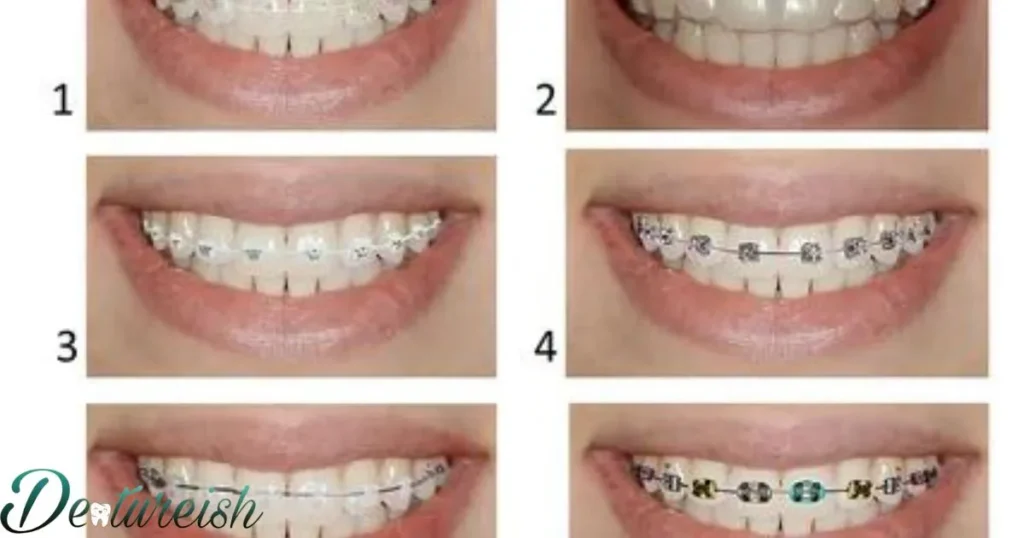
The costs for braces vary depending on treatment specifics from patient to patient. However, lingual braces typically come with a higher total price tag compared to regular metal braces in front. One factor is time, as lingual treatment tends to last 3-6 months longer on average. This adds recurring costs of routine checks and wire changes over more months.
Another factor is complexity. The customized lingual brackets require greater orthodontic skill and take longer to apply than straightforward front brackets. All these extra procedures drive up the overall charges. Lingual braces have higher production costs per bracket set as well. Despite the price, many patients find lingual braces worth it for discretion.
Are Lingual Braces Always More Costly Than Regular Braces?
While lingual braces usually are pricier, there are some exceptions. If treatment is very minor, fixing just a few teeth, it may cost about the same as regular braces. And insurance coverage levels vary – if a plan covers a certain amount of both options, it could make them equal. Some orthodontists may also offer promotional discounts on lingual treatment periodically.
Compared to common metal braces, lingual will likely be slightly higher. But clear traditional aligners like Invisalign can cost even more than lingual braces for longer treatment cases. And traditional treatment may not work for complicated cases, forcing patients to try costlier lingual or surgery options. Expenses depend on numerous personal issues, so a consultation is needed.
Do Treatment Times Affect Price?
Treatment length makes a significant difference in cost whether using lingual or regular braces. Shorter treatment means fewer adjustments, less time in braces, and lower total fees. Since lingual orthodontics generally takes longer, from 3-6 extra months in many cases, the bills accumulate more for the same results.
Each monthly check and wire change charges additional fees on top of the initial cost. Patients saving 6 months of time with regular braces avoid those added costs. Insurance yearly maximums can also be reached more quickly with lingual treatment elongating the process. Overall treatment time impacts both out-of-pocket and total insurance payments required in most cases.
Factors Influence Lingual Braces Costs
Several factors influence the cost of lingual braces treatment. The orthodontist will assess each patient’s individual case to determine a customized treatment plan and estimated fees.
Generally, lingual braces costs are higher than traditional braces due to the complex installation process. However, the table below outlines some specific elements that may affect the price.
| Factor | Impact on Cost |
| Case Complexity | More complex cases involving jaw surgery or extra teeth correction tend to be more expensive. |
| Treatment Length | Shorter treatment durations typically cost less than cases requiring additional adjustments over longer times. |
| orthodontist Experience | Specialists who perform many lingual brace treatments may charge less than those less experienced. |
| Location | Urban orthodontic offices in major metro areas often have higher overheads passed to costs. |
| Additional Procedures | Prices rise with costs of any premolar extractions, gum treatments, or retainers included. |
Can Insurance Help Cover Lingual Braces Expenses?
Many dental insurance policies will pay a percentage of orthodontic costs, whether for traditional or lingual braces, up to an annual maximum benefit. Covered services like x-rays and monthly appointments tap this allowance, spreading overall expenses across multiple plan years if treatment is extensive. Out-of-network lingual providers may have differing coverage amounts too.
Patients can check specific policy coverage levels and lingual brace inclusion. Coverage details vary greatly between plans so it’s crucial to verify in advance. Understanding deductibles and maximums helps determine remaining out-of-pocket share potentially due with treatment selection. Insurance clauses may surprise, so confirm anticipated costs early in treatment planning.
Are There Payment Plan Options?
Most orthodontists realize braces can be expensive and offer flexible financing alternatives. In-office payment plans let fees be spread over the entire treatment period, divvying them into affordable monthly installments. Some collect a percentage up front then the remainder in regular payments.
Outside providers like CareCredit provide low or no-interest deferred payment plans for lingual braces lasting 6-24 months depending on total costs. Longer schedules keep the monthly amounts low with adjustable due dates. These third-party partners are convenient when insurance alone doesn’t cover all expenses. Flexible options help afford braces, whether lingual or traditional.
Patient Considerations For Braces Selection

When choosing between types of braces, patients consider factors like appearance, comfort, and oral hygiene. Lingual braces are placed behind the teeth for discreetness but regular braces are usually more affordable and may be easier to adjust.
Other issues that matter include potential damage to teeth, ability to brush effectively, and whether certain foods can still be eaten. Patients need to weigh their priorities to determine the best brace option for their lifestyle and dental health goals. Consulting an orthodontist helps narrow the choice.
How Do Patients Choose Between Lingual And Regular Braces?
A main deciding factor is whether visibility of braces is a concern. Lingual braces are barely noticeable when smiling or talking but installing and adjusting them is more difficult so treatment may take longer. Regular braces are less expensive and simpler to work with though they are visible.
Comfort is another key consideration. Lingual braces carry more risk of teeth pain or irritation but regular braces may interfere less with chewing and tongue space. Patients try to foresee which type would feel more comfortable over their treatment period.
What Aesthetic Concerns Matter Most To Patients?
The biggest cosmetic issue is avoiding embarrassment of visible wire and brackets. Lingual braces completely hide any sign of treatment from others but costs more up front. Regular braces require getting comfortable with their appearance in social situations.
Patients also consider potential side effects like lisp development, tooth staining, or rubbing sores. Lingual braces minimize these aesthetic issues but regular braces are low cost and low maintenance once engaged in orthodontic care.
Does Oral Hygiene Or Diet Impact Preference?
Some patients worry braces will inhibit eating favorite crunchy or chewy foods. Regular braces present more obstacles but lingual types can rub gum tissue raw. Patients must commit to a diet and cleaning routine with either option.
Good oral care is essential with braces. Lingual braces make brushing trickier so patients double-check their dexterity. Regular braces allow direct access but retain food debris easier. Special brushes, floss threads, and irrigating tools help maintain excellent hygiene.
Do Orthodontists Recommend One Over The Other?
Orthodontists assess each mouth’s anatomy and proposed treatment when advising patients. Some cases inherently suit lingual or regular better. If either type can work, cost may be a deciding factor along with individual priorities like comfort, speech, or appearance.
Modern wires, materials, and techniques mean lingual braces deliver results once possible only with regular braces. Orthodontists help patients weigh considerations to find the best personal solution without compromising healthy teeth or a beautiful outcome.
What Level Of Pain Or Discomfort Do Patients Expect?
Most orthodontists prepare patients to expect some initial wire tightening pains with either brace type as teeth start moving. Lingual braces often cause temporary tooth sensitivity but regular braces interfere less with chewing and speech. Taking recommended pain relievers helps manage symptoms.
Discomfort usually peaks around 2 weeks and subsides within a month as teeth adjust. Lingual braces may involve more persistent minor soreness. Patients commit to treatment duration knowing short term pains result in long term straight confident smiles.
Lingual Braces Pros And Cons
While lingual braces hide treatment very discreetly, installing and adjusting them tends to take longer appointments since orthodontists access the mouth from a less direct angle. Regular braces are simpler for adjustments.
However, modern lingual techniques and materials greatly improve comfort and duration. Lingual braces interfere less with chewing, speech, and tongue space over time compared to initial teeth positioning phase.
Benefits Of Choosing Lingual Braces
Discretion
Lingual braces are hidden behind the teeth, keeping orthodontic treatment completely invisible. This allows for normal facial expressions and conversations without concern about others noticing braces.
Self-esteem
Having braces that can’t be seen provides confidence from not worrying about a change in appearance during the treatment process. This boosts self-esteem throughout orthodontic therapy.
Clear speech
Lingual braces don’t press on the lips or front teeth so any lisp effect clears up quickly. Speech returns to normal fast with lingual braces compared to regular braces.
Comfort
There is less rubbing or irritation of gums and lips from hardware. Lingual braces are more comfortable for chewing and biting once teeth have adjusted.
Hygiene
Behind-the-scenes braces keep teeth cleaner by avoiding foods collecting around wires. This reduces risks of stains, sores, and cavities associated with regular braces trapped dirt.
Do Lingual Braces Affect Speech Less Than Regular Braces?
At beginning, both brace types carry lisping risks as front teeth wire presses tongue. However, lingual braces resolve this much faster since no obstacles disrupt normal tongue placement and lip/tooth contact. Regular braces require extra speech practice.
Once settled in place, lingual braces have no effect on speech abilities. Some slight lisp may flare up during rare wire changes but clears up right away unlike regular braces lisp tendency throughout treatment.
Can Lingual Braces Be Removed For Special Occasions?
Orthodontists usually avoid frequent lingual brace removals which could disrupt treatment timing and progress. However, special events may permit partial bracket removal from front teeth just for photos then quick replacement. This lets patients fully enjoy celebrations brace-free.
Regular braces can simply be shown off or covered with appliances like Flippers for short duration special occasions if removal feels necessary.
Are Lingual Braces More Comfortable For Chewing And Biting?
Early on, both types impact chewing while teeth adjust. Lingual braces place less direct pressure on lips and tongue so speech improves faster. Regular braces pose less risk of irritated gum tissues from behind-the-teeth hardware rubbing.
However, as treatment establishes proper tooth positioning, lingual braces interfere minimal with chewing motions and biting compared to regular brackets pressing gum and lip tissue each time.
Do Lingual Braces Lead To Less Teeth Staining Or Cavities?
Their behind the scenes nature helps prevent foods and drinks from trapping around brackets and wires to stain teeth darkly over time. Regular braces require diligent cleaning to avoid decay forming in trapped places.
Lingual braces also reduce risks of rubbing sores, enamel wear and early cavities from constant pressure points wires impose directly on front teeth surfaces. Good oral care serves both options well but lingual braces impact less visible areas.
Making The Best Decision For Your Smile
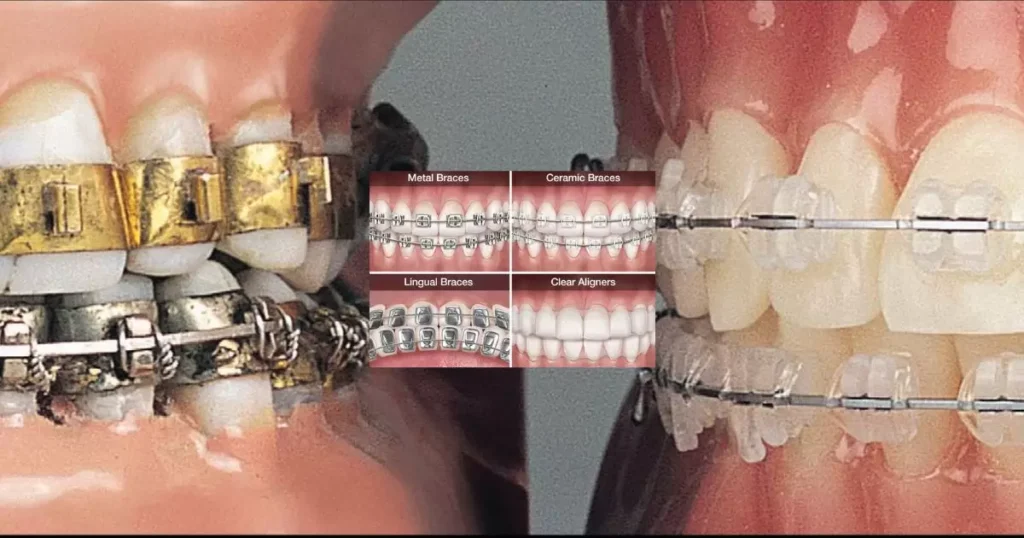
Comparing lingual braces vs regular carefully considers individual dental health, lifestyle, budget and self-esteem needs. While orthodontists advise best method, patients choose treatment optimizing their priorities and commitment to follow through. A smile plan empowers patients.
How Can You Determine If Lingual Braces Are Right For You?
Patients contemplate dental concerns like crooked or crowded teeth positioning and jaw alignment requiring intervention. They take inventory of personal qualities like high visibility job, budget, and willingness to tackle lingual braces challenges for invisible results. Assessing all factors assists patients and orthodontists together finding the ideal treatment path.
What Questions Should You Ask Your Orthodontist?
Questions help patients gather advice specific to their mouth before deciding between braces types. Inquiries cover procedure details, commitment level, payment options, lingual vs regular suitability given malocclusion, expected length, potential discomforts, maintenance routines, risk of retreatment and long-term stable results. Comprehensive answers build confidence choosing the right treatment plan.
Can You Request An Estimate Or Consultation?
Most orthodontic offices provide free consultations to examine a person’s teeth and bite, discuss goals and concerns, analyze records, and present customized treatment recommendations. Quotes give estimated costs and durations to consider for creating a financial plan. This informative session with X-rays and impressions helps patients experience options before committing.
Are There Any Trials Or Payment Plan Options Available?
Some orthodontists offer minor surgery or removable aligners on a trial basis so uncertain patients can test different approaches. Monthly payment plans make braces affordable, breaking total fees into interest-free portions. Care Credit lines of credit help finance procedures. Scholarship or rebate programs may also apply depending on an individual’s needs and eligibility.
When Is The Best Time In Life To Get Braces For Straight Teeth?
While teens and pre-teens undergoing dental changes often receive braces, many orthodontic practices successfully treat people beyond adolescents. In fact, invisalign clear aligners demonstrate effective results on adults. Maturity brings dedication to responsible self-care and hygiene needed for successful orthodontic therapy. Obtaining straight teeth is worthwhile throughout life.
Frequently Asked Question
Are lingual braces worth it?
Lingual braces are worth it for those seeking a discreet orthodontic option.
How much longer do lingual braces take?
Lingual braces typically take about the same time as traditional braces for treatment.
What type of braces cost the most?
Lingual braces tend to be the most expensive type of braces due to their customization and complexity.
Is Invisalign more expensive than lingual braces?
Invisalign treatment often costs less than lingual braces, but prices can vary depending on individual cases and providers.
Can you kiss with lingual braces?
Yes, you can kiss with lingual braces, although it may take some adjustment initially.
Conclusion
The best orthodontic option, considering the true costs of both regular and lingual braces involves weighing more than just the initial price tag. While lingual braces usually command a premium for their invisibility, one must also account for potential indirect expenses like missed work, dietary limitations, and oral care adaptations during treatment with either approach.
Lingual braces offer life-changing confidence through discreet tooth straightening that regular braces cannot provide. For many patients, paying a higher fee for lingual braces invisibly transforms smiles and boosts self-esteem throughout the correction process compared to coping with visible wires for months.
